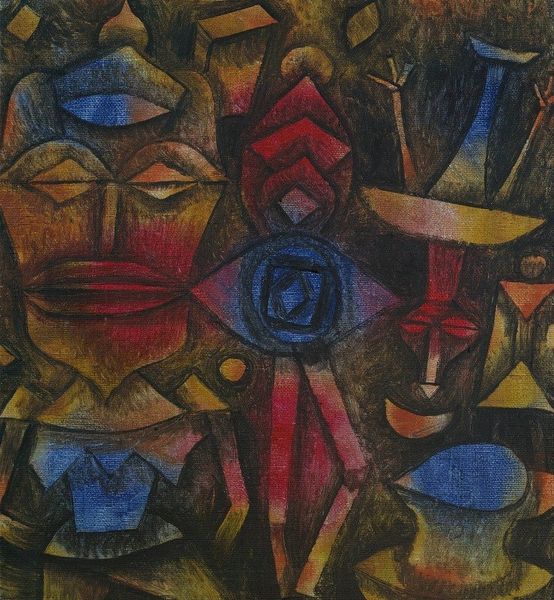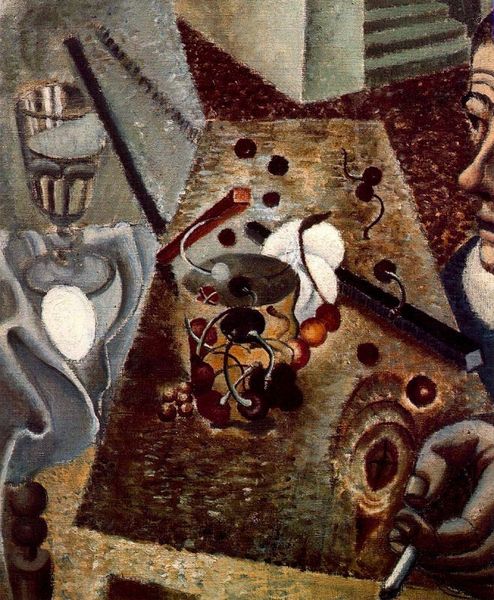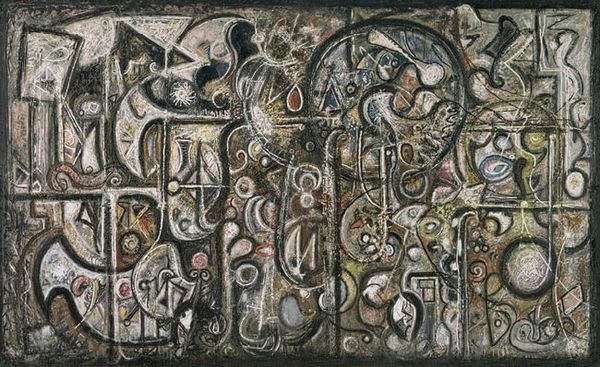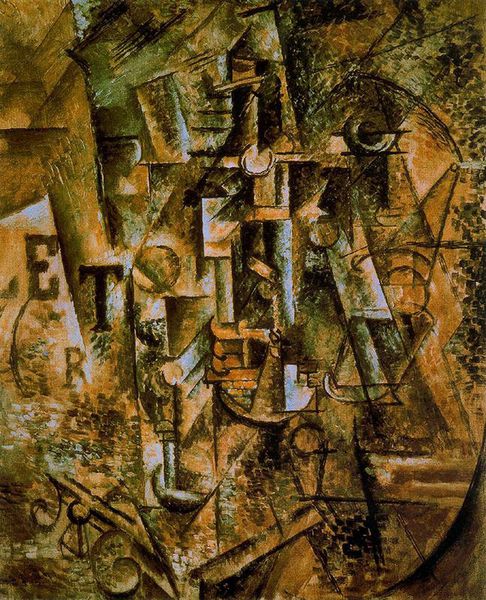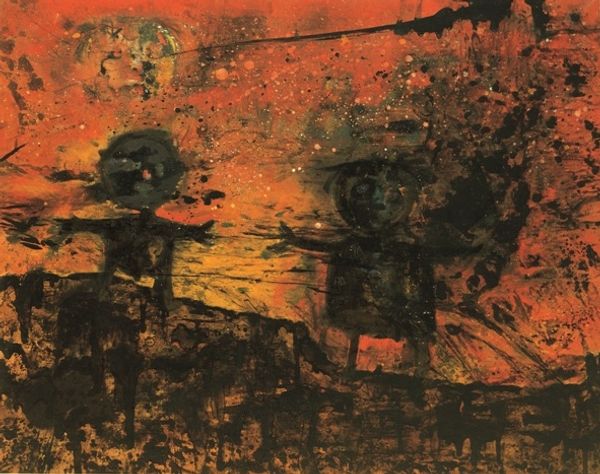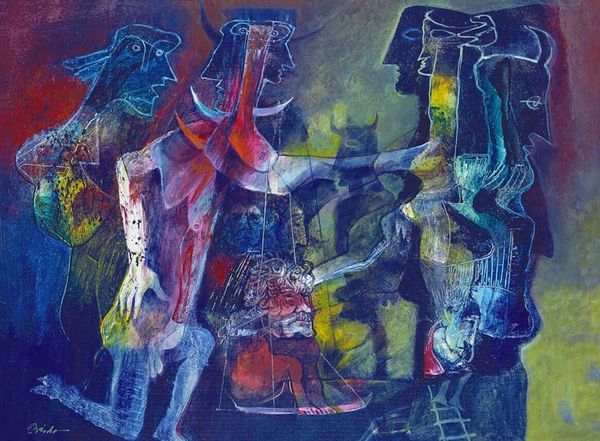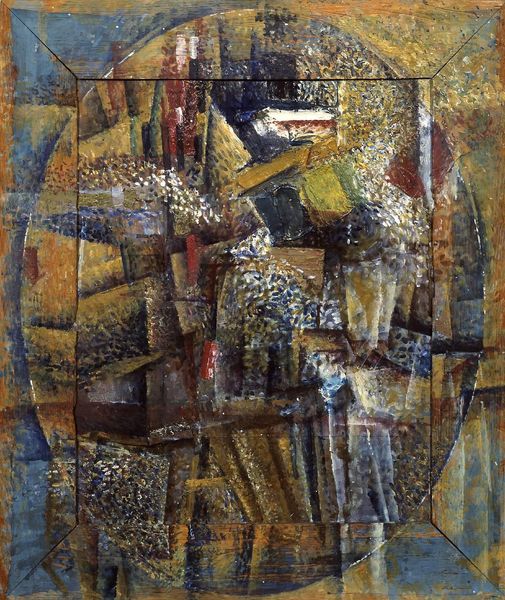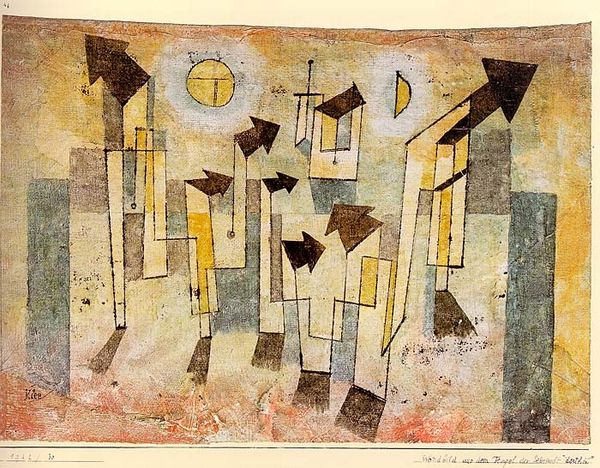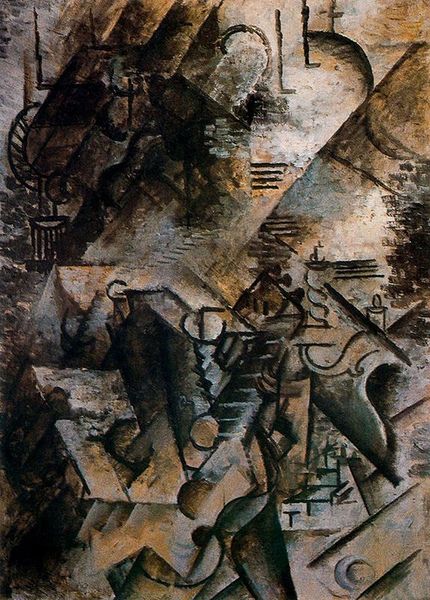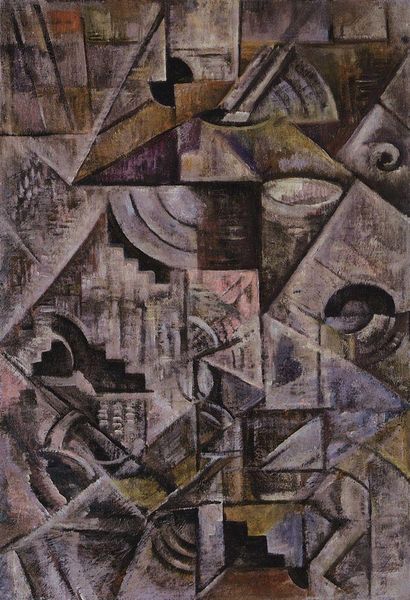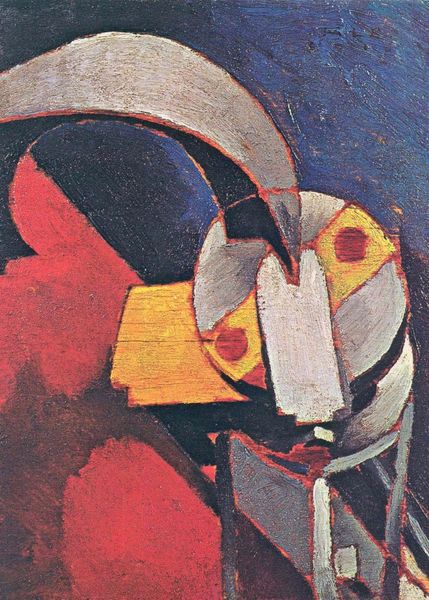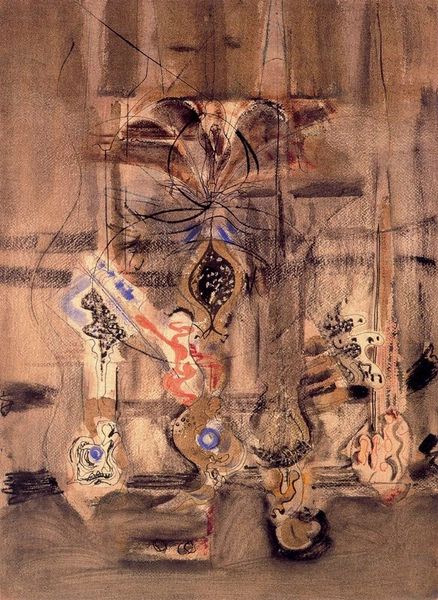
mixed-media
#
cubism
#
abstract expressionism
#
mixed-media
#
abstract painting
#
pattern
#
expressionism
#
geometric-abstraction
#
abstraction
#
mixed media
#
building
Copyright: Public domain
Paul Klee's “Women’s Pavilion” invites us into a garden of the mind, shaped by the tumultuous currents of early 20th-century Europe. Klee, who lived through the rise of modernism and the two World Wars, often used abstraction to convey complex emotional landscapes. This painting, with its geometric forms and muted colors, can be seen as a response to the period’s changing social roles and gender dynamics. The ‘pavilion’ suggests a space of shelter or gathering, potentially alluding to the burgeoning feminist movements of the time. Yet, the abstract style obscures any literal representation, inviting a deeper reflection on the private, interior lives of women. Klee's choice of symbolic shapes—spheres, triangles, and rectangles—might represent different facets of feminine identity, while the overall composition evokes a sense of harmony and balance. The artist once said, "Art does not reproduce the visible, but makes visible." As you reflect on this work, consider how it speaks to both the historical context of its creation and the timeless themes of identity, gender, and the spaces we inhabit.
Comments
No comments
Be the first to comment and join the conversation on the ultimate creative platform.
